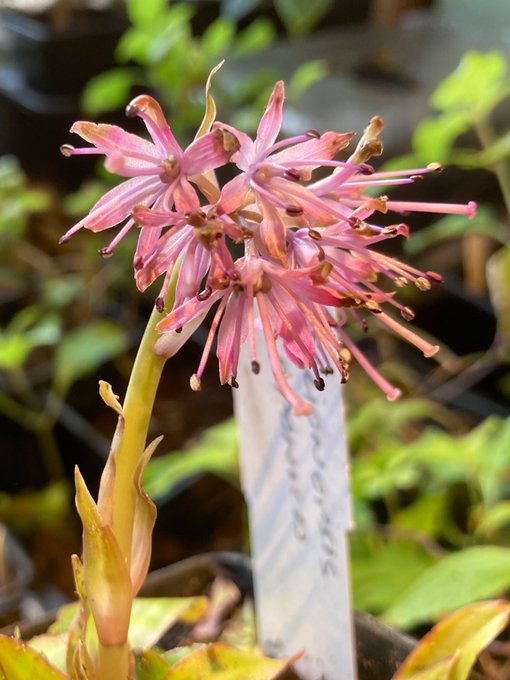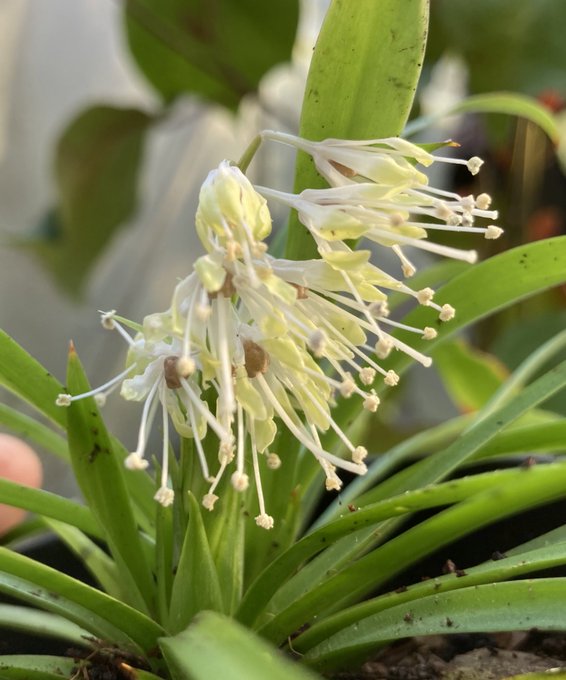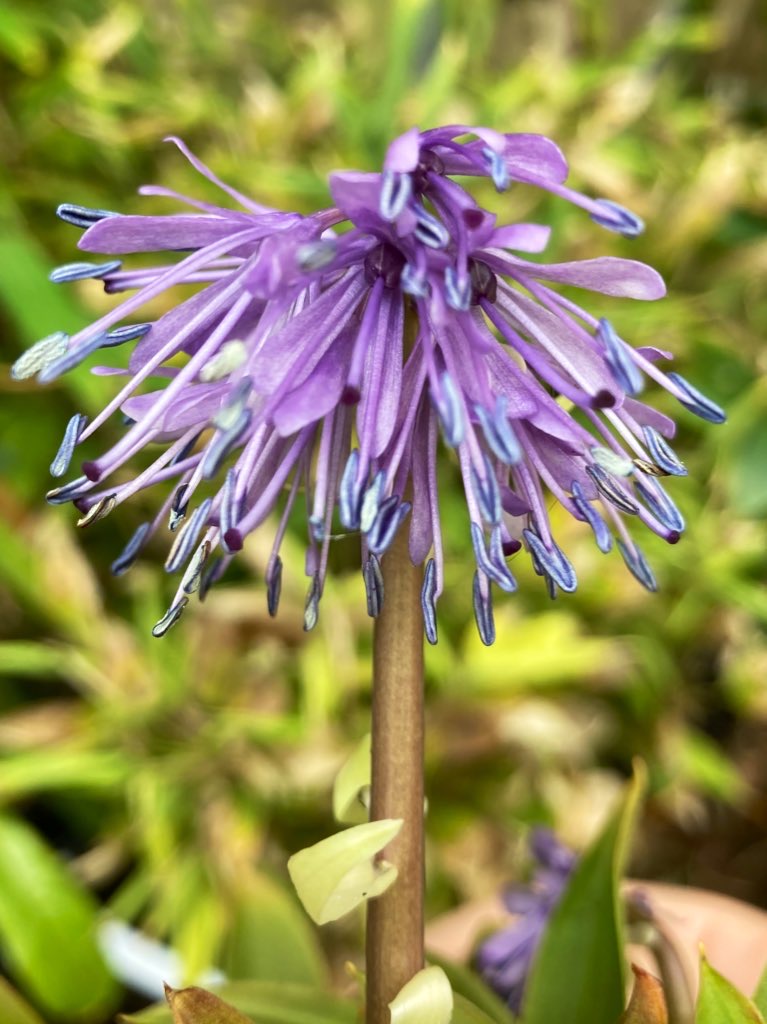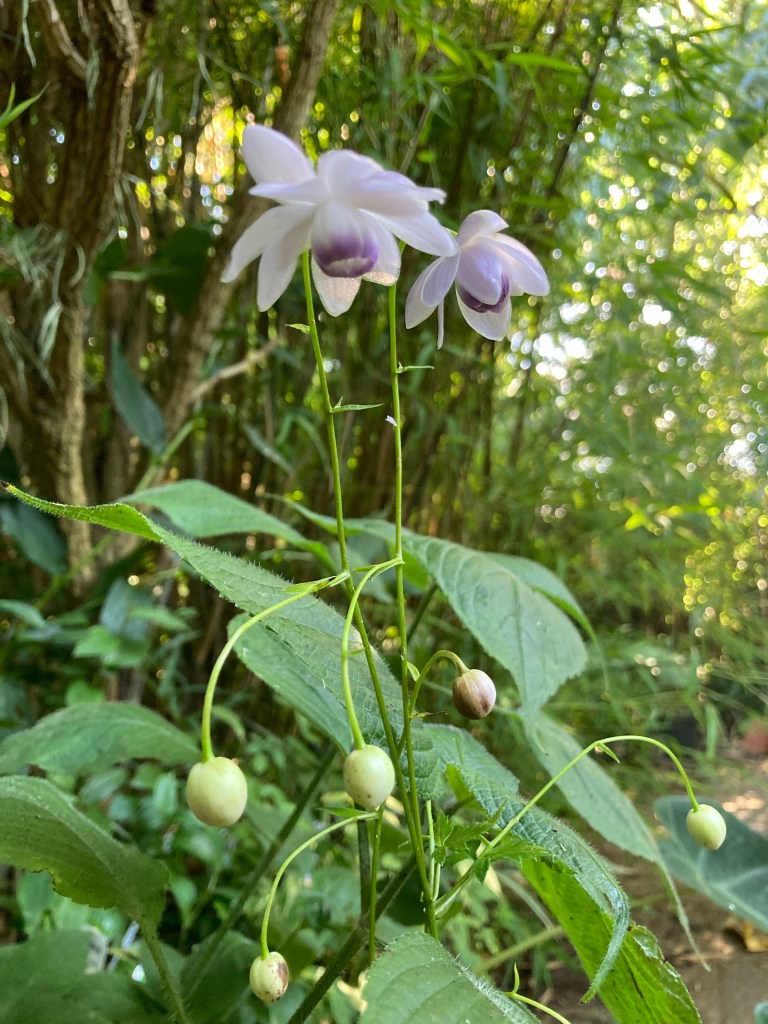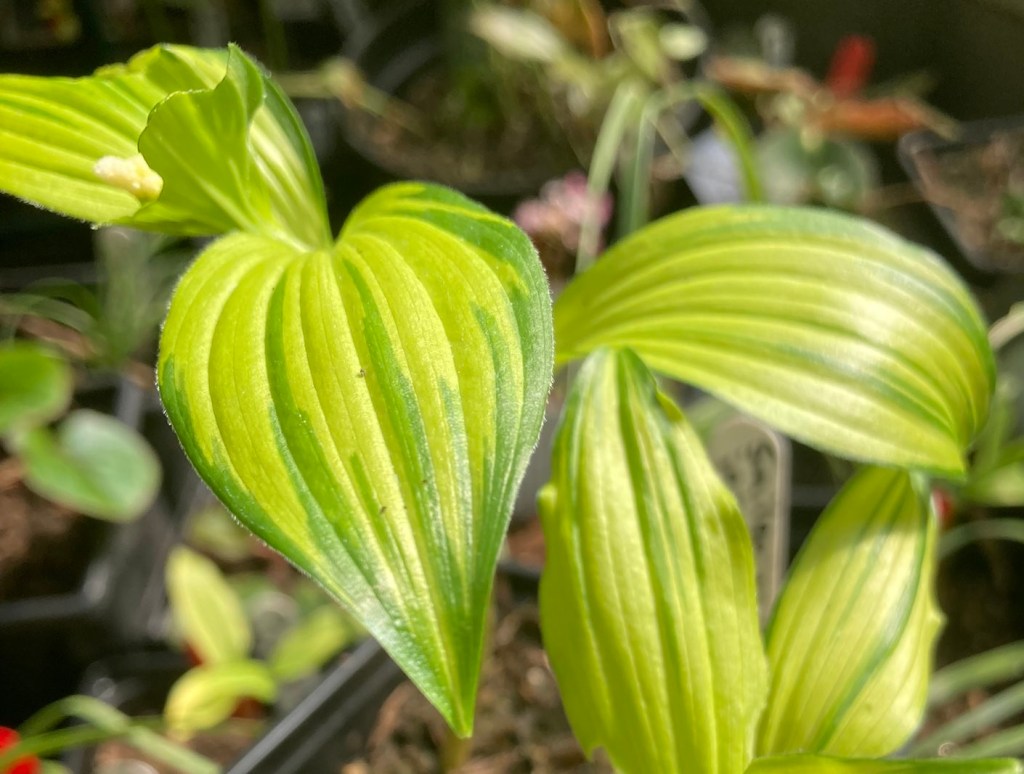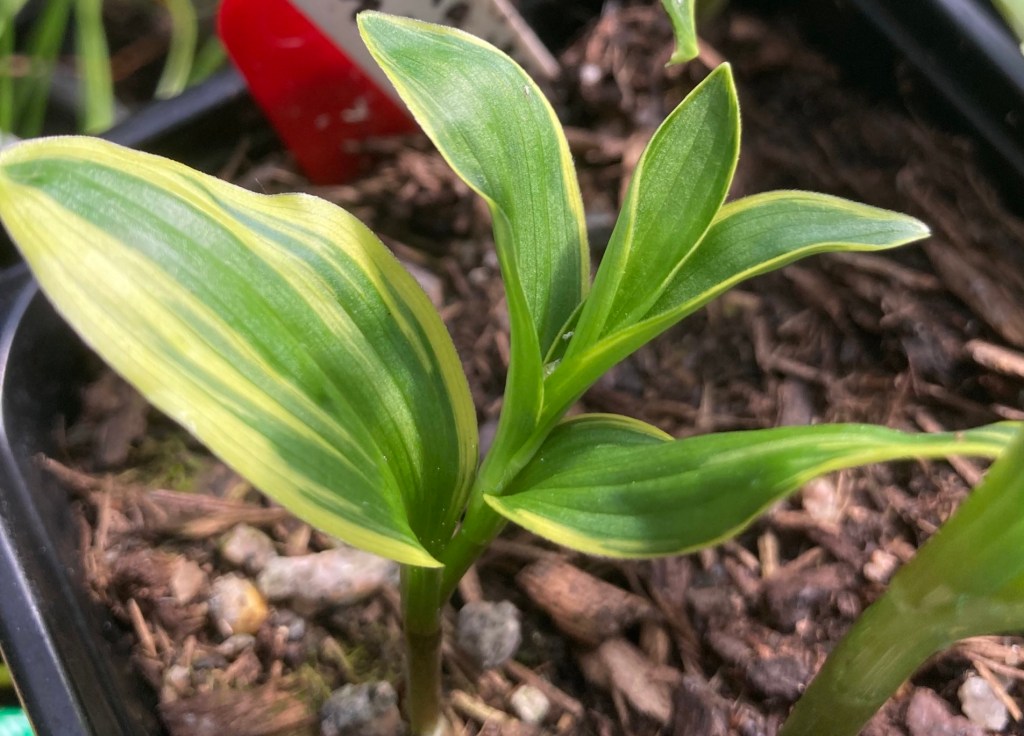I was delighted to be awarded a new National Collection of Heloniopsis and Ypsilandra in November 2023. The collection contains eleven species plus five cultivars and forms – all that are currently available in the U.K. (There is a variegated form of Heloniopsis orientalis, not available here at present, which I would love to get my hands on!) They are all in propagation and I hope to be able to offer small numbers of most forms for sale in the next few years.
Heloniopsis and Ypsilandra are two very closely related genera of evergreen woodland perennials from East Asia – so closely related that some authorities place them in a single genus, Helonias. They belong to the Melanthiacaea family, together with more well-known plants such as Trillium and Paris.
Ypsilandra contains about 5 species and Heloniopsis about 7. They are quite uncommon and not all species are in cultivation in the U.K. The most commonly available is Ypsilandra thibetica. They all have low rosettes of strap-like leaves and produce flower spikes of nodding, tubular flowers in shades of white, pink, and lilac, in late winter into early spring.
Heloniopsis are native to China, Japan, Taiwan, and Korea. Their common name is Oriental Swamp Pink or Japanese Hyacinth, and their name in Japanese is Shoujou Hakama (Shoujou is a red-haired, sake-drinking spirit, and Hakama are the traditional Japanese wide trousers). They require a reliably moist, humus rich soil in at least partial shade. It is a good idea to plant the rosette at a slight angle to allow water to run off and avoid rotting.
Ypsilandra are native to China, Myanmar and Thailand. They require similar growing conditions to Heloniopsis but will tolerate slightly drier conditions, which Heloniopsis absolutely will not. They flower very early – often in February – and have lightly scented white flowers with unusual pale blue anthers. The flowers fade to a coppery pink as they age. They are used in Chinese medicine to stop bleeding.
Both Ypsilandra and Heloniopsis can be rather reluctant to produce many seeds, but can be propagated, carefully, by division in spring. However, they can be propagated more reliably by leaf cuttings. Last year’s leaves are detached and placed in trays with both ends of the leaf inserted in a slightly damp growing medium. The trays are then placed in indirect light and kept warm. Plantlets may be produced at either end, and sometimes along the central vein. They take three years or so to reach flowering size. Heloniopsis orientalis naturally produces these plantlets where the tips of its leaves touch the soil, and in fact this is its main method of reproduction in its native habitat.
Though uncommon, they are great garden plants and worth seeking out, providing delicate colour at a time of year when every flower is especially valuable. I particularly recommend Ypsilandra thibetica, Heloniopsis orientalis, and Heloniopsis tubiflora ‘Temple Blue’.



